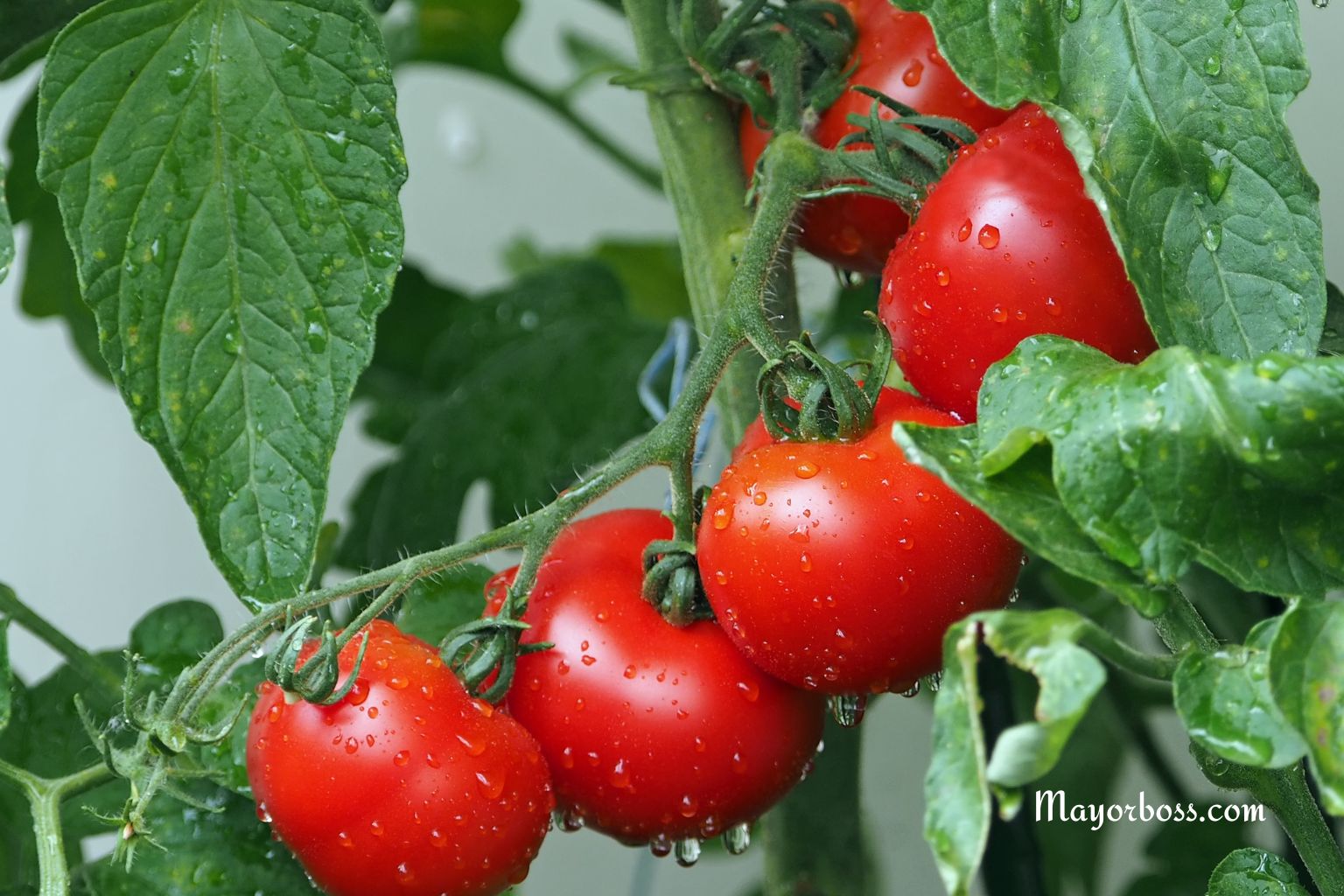How to Protect Tomatoes From Pests
To protect tomatoes from pests, keep plants healthy, use natural barriers, attract beneficial insects, inspect leaves often, and apply safe pest control methods as needed.

Insects and small animals love tomatoes as much as we do. They can cause holes in leaves, spots on fruit, and even destroy a whole crop if not managed early.
You may feel frustrated when you see signs of pest damage. The good news is that you can protect your tomatoes. It takes some planning, a bit of effort, and the right information. Let’s look at practical ways to keep your tomato plants safe from common pests.
Know the Common Tomato Pests
Before you can protect your tomatoes, you need to know what you’re up against. Here are the pests you’re most likely to find in your garden:
- Aphids: Small, green or black insects that suck the sap from leaves and stems.
- Tomato Hornworms: Large green caterpillars that eat leaves and fruit.
- Whiteflies: Tiny, white flying insects that cluster on the underside of leaves.
- Cutworms: Fat, gray, or brown caterpillars that cut off young plants at the base.
- Spider Mites: Very small red or yellow insects that cause fine webs and yellow leaves.
- Slugs and Snails: Mollusks that leave holes in leaves and chew on fruit.
- Stink Bugs: Shield-shaped bugs that suck juices from tomatoes, leaving hard spots.1
Start With Healthy Plants
Strong plants can better resist pests. Begin by choosing disease-resistant tomato varieties.2 Buy seedlings from trusted sources or start your own from clean seeds. Good soil with plenty of organic matter also helps roots grow strong.
When you water, aim for the base of the plant. Wet leaves attract fungi and pests. Mulching keeps soil moist and discourages weeds that can shelter insects.
Use Physical Barriers
Simple barriers can keep many pests away from your tomatoes. Here are some easy options:
- Row Covers: Lightweight fabric placed over plants blocks flying insects but lets sunlight and water through. Remove covers when flowers appear so bees can pollinate the plants.
- Cages and Stakes: Supporting your tomatoes with cages or stakes keeps leaves and fruit off the ground, making it harder for crawling insects to reach them.
- Mulch: A layer of straw or bark at the base of plants can keep cutworms and beetles from crawling up the stems.
Attract Beneficial Insects
Not all bugs are bad. Some insects, like ladybugs and lacewings, feed on tomato pests. You can attract these “good bugs” by planting flowers and herbs such as marigold, dill, basil, or calendula nearby. These plants offer food and shelter for beneficial insects.
Inspect Plants Regularly
The earlier you spot a problem, the easier it is to fix. Walk through your garden at least twice a week. Look under leaves and along stems for signs of pests or damage. If you see clusters of eggs or larvae, remove them by hand. You can drop them in a container of soapy water to keep them from returning.
If you notice sticky leaves or fine webbing, check closely for aphids or spider mites. Sometimes a quick spray of water from a hose is enough to remove them.
Practice Crop Rotation
Planting tomatoes in the same spot year after year allows pests to build up in the soil. Rotate your crops each season. For example, after growing tomatoes, plant beans or carrots in that space next year. This practice keeps pest numbers down and improves soil health.
Use Natural Pest Controls
When you need extra help, use safe pest control methods first. Avoid strong chemicals if possible, as they can harm helpful insects and pollinators.
- Neem Oil: This natural oil works against aphids, whiteflies, and spider mites. Spray neem oil on affected leaves, but do it early in the morning or evening to avoid harming bees.
- Insecticidal Soap: These soaps are safe for most plants and help control soft-bodied insects like aphids and whiteflies. Spray directly on the pests.
- Diatomaceous Earth: A powder made from tiny fossilized algae. Sprinkle it around the base of plants to keep slugs and soft-bodied insects away. Wear a mask when applying to avoid breathing it in.
Remove Weeds and Debris
Weeds and garden debris can hide pests and their eggs. Pull weeds regularly and clear away fallen leaves or old fruit. Dispose of plant material outside the garden to prevent pests from returning.
Keep Birds and Animals Away
Sometimes birds or small animals like squirrels go after your tomatoes. You can deter them with shiny tape, garden netting, or scarecrow figures. Pick tomatoes as soon as they start to ripen to avoid losing them to animals.

When to Use Chemical Pesticides
Use chemical pesticides as a last resort. If you do need them, choose products labeled safe for vegetables and follow directions closely. Always wash tomatoes well before eating.
FAQs
1. How often should I check my tomato plants for pests?
Inspect your plants at least twice a week. Early detection helps you act quickly before pests spread.
2. Are there natural ways to keep pests off my tomatoes?
Yes, use row covers, mulch, hand-picking, neem oil, and plant flowers or herbs that attract beneficial insects.
3. What should I do if I see holes in my tomato leaves?
Look for signs of caterpillars, such as tomato hornworms. Remove them by hand and check for more each day.
4. Will pesticides harm my tomato plants?
Some chemical pesticides can damage tomato plants or harm beneficial insects. Use them only as a last option and follow label instructions carefully.
5. Why do I keep getting the same pests each year?
Pests often return if you plant tomatoes in the same spot each year. Rotate your crops to reduce this risk.






